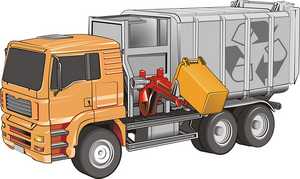
We live in a truly wonderful age for reasons we completely take for granted, like sewers and garbage service. Turn the clock back just a couple hundred years and your typical London home had a cesspit beneath the house that, when full, would then flow into a trough in the middle of the street and hopefully flow downhill to the river. To quote a manuscript from the time “In the best of homes the nauseating stench permeated the most elegant parlor. Indoor odors were often worse than of the garbage and manure-filled streets.” The sophisticated folks of that time considered this an improvement over earlier times when folks simply tossed their waste out the front door or out the widow into the streets. (The window tossing is why wide brimmed hats were so popular.)

So why do I mention this juicy tidbit of human history? First, it was this complete lack of sanitation that wasresponsible for such rampant disease troubles in those times. Second, our bodies have the same issues internally with the same consequences. Our cellular structures, both inside the cells and around the cells, are just like the houses and streets of London. As waste products build up, we must clean out the houses (cells) and streets (blood vessels). Inside the cells there are special servants called lysosomes that activate during times of quiet to clean up the garbage in the cell and digest it. This process is called autophagy – meaning self-eating. These guys act like garbage trucks and sewer systems, things old London town didn’t have back in the 1800’s.
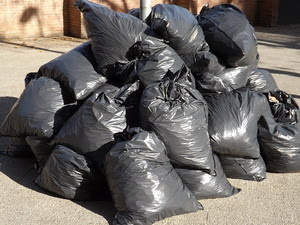
What is the garbage that builds up in cells? All the structures in cells are made up of proteins and fats. These are shaped into very specific shapes like tools to do specific jobs. When these tools are attacked by free oxygen radicals or excess hydrogen ions, their shape becomes distorted and they no longer can work to do their job. They are now broken and end up as junk protein floating around in the cell. Too many of these broken proteins and the cell becomes clogged up and can’t do its job. Autophagy is supposed to tell the lysosomes to digest these broken proteins down to simple amino acids so they can be recycled and madeinto new tools. The problem is,what happens if autophagy never turns on? The sewer and garbage back up and cells get sick.
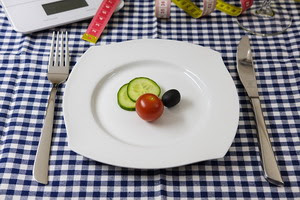
Here is the big money question – are you turning on your autophagy signals so you clean up your mess and recycle your proteins? Chances are if you are a typical American you are not turning on autophagy. I said earlier that this turns on during quiet times (biochemically speaking.) What are quiet times? These are times when you are not digesting food and supplying nutrients to your system telling it to grow and repair. Autophagy happens when you are short on nutrients. As long as you are well fed and have plenty of nutrients coursing through your veins, the garbage trucks never come out. The cleanup crews stay home and do nothing. As long as you have nutrition available, your body will use it to build and repair tissues. Once the nutrition runs out, that is when your body can start to clean out the wastes.
Your body has three nutrient sensors that control this process – insulin, mTOR, and AMPK. Insulin senses the presence of sugar/carbs, mTOR senses the presence of protein, and AMPK senses the store of available energy to do work. Insulin most of you have heard of relative to diabetes. Insulin resistance leading to diabetes (type 2) is your body getting so tired and toxic of trying to deal with sugar that it stops listening to the signals. If you are a weight lifter, you have probably heard of mTOR because it signals your body to build more muscle. It says “We have the available protein to build with so lets go for it.” AMPK is less well known to the general populace, but very important. When your energy levels are depleted, AMPK levels go up. AMPK levels regulate autophagy.
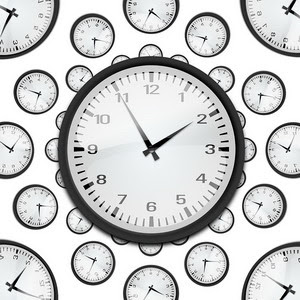
To put this all in simple terms, about 8 hours after yourlast meal your liver will be finishing up processing your food and dumping fresh nutrients into your blood stream. At this point your insulin and mTOR levels will start to fall and your AMPK levels will start to rise. These are the signals your body needs to start autophagy and get the cleanup trucks rolling. The big problem is most Americans never go more than 8 hours without food. Because of this they never go into autophagy. Their cells and vessels are like poor old London town – pretty disgusting. The result is degenerative diseases, cancer, autoimmune disease, environmental sensitivities, and rapid aging. Did you know that as of this year the average human life span is actually decreasing? That’s right, we are dying earlier than our parents.

So what is the answer to this dilemma? The answer is obvious – do what we have to to increase autophagy. That means lowering insulin and mTOR levels and increasing AMPK signaling. And that means lowering sugar/carb levels and protein levels from our diet intermittently to trigger time for cleanup and protein recycling. The current trend of doing intermittent fasting – where you restrict your eating to an 8 hour window of time each day is a good place to start. That gives your body about 8 hours a day of cleanup (8 hours of eating, 8 hours of liver processing, and 8 hours of cleanup.) But for many people after a lifetime of all day eating, this is like bailing out a sinking boat with a teacup. Many of us need a lot more time spent in cleanup mode than we need in growth and repair – especially those of us over 45. Past the age of 45 the processes of growth and repair are actually the same processes as accelerated aging.
So how can we do this? A big clue is in the fact that there is not an autophagy controlling sensor for fat nutrients. That is because when we are not eating protein or carbs/sugars, our body steps into fat burning mode. That means that if we eat a diet of fibers and fats and no carbs or proteins, then we should be able to step into autophagy fairly easily. What does that look like? It looks like eating the leaves, stems, flowers, and non-starchy roots of vegetables along with some non-inflammatory fats (butter, coconut, olive, avocado.) It also means avoiding seeds, grains, legumes, nuts, meats, eggs, sugars, vegetable oils, and any other sources of carbs, sugars, and proteins.

I would suggest having vegetable soup and salad days one, two, or even three days a week. You might alternate salad days with regular days during the week, or you might string several salad days together followed by several carb/protein days. Right now I am doing salad days Mondays and Tuesdays and sometimes Wednesdays and then the rest of the week for proteins and increased carbs. This is easier if you are eating keto on the weekend so that come Monday you are already fully into fat burning.
An interesting side effect of doing things this way is that the levels of growth hormone really shoot up during the salad days even though it can not do what it wants to do because the mTOR levels are down. But these high levels of growth hormone stay elevated for a couple days after I go on proteins to supercharge my growth and repair pathways to use the recycled proteins to make new cellular parts. I am replacing old worn out parts with young new healthy parts.
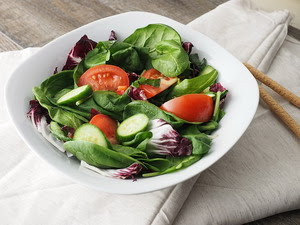
Approach this new way of relating to food slowly. Try outa salad day here and there and see how you feel. As I said earlier, if you are in a keto state you feel great doing just leafy greens with a little healthy dressing. Use herbs and spices liberally along with vinegars and stevia. For a little fun try out zero carb noodles. They count as a vegetable.
My neighborhood smells pretty good compared to old London town thanks to the wonders of modern sanitation and garbage pickup. My plan now is to make my insides work as well as my neighborhood.
